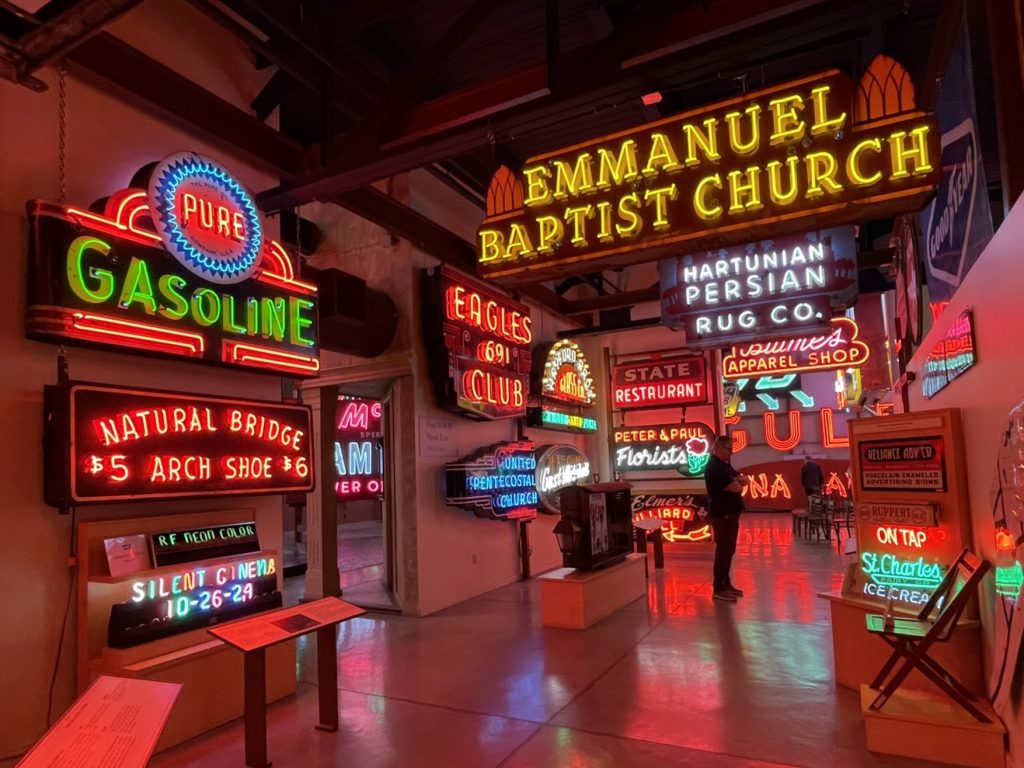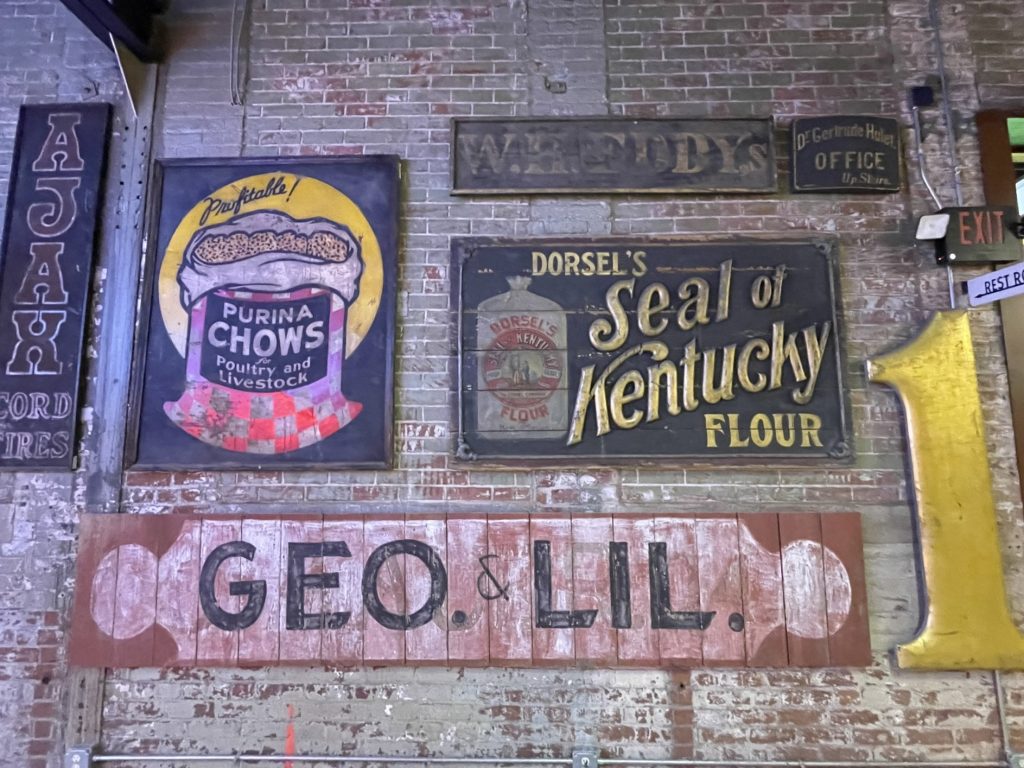We had a great time at the American Sign Museum in Cincinnati. Even though it is home to “just” a bunch of signs, the museum is high energy and was fun to amble through.
The museum traces the history of signs –– from basic hand-painted signs from the late nineteenth century up to the flashy “look at me!” signs of the 1970s. More than 500 signs are on display, though it felt like thousands! Neonworks of Cincinnati also operates from the space, where you can watch neon signs being restored.


The museum opened in 2005 (it’s been at its current location since 2012), and includes a mixture of true historical signs and a re-created “Main Street” in a town called “Signville.” For this a team of professionals was brought in to hand-paint the signs on site. We watched their video on this, and it’s truly amazing that these signs were done by hand –– you’d never guess it to look at them.
The museum was founded by Tod Swormstedt, whose family owns the signage industry trade journal Signs of the Times, which has been published since 1906 and in Swormstedt’s family since 1911! Tod worked at the magazine for 26 years before moving to his “mid-life crisis project.”

















